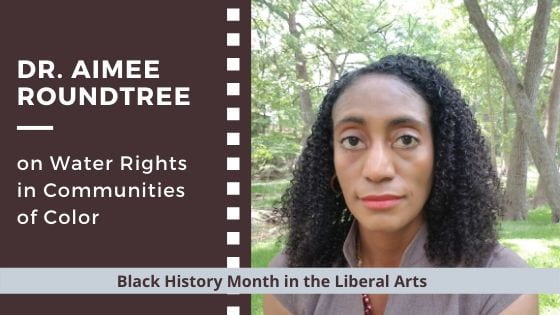
Communities of color have had to defend their right to safe, clean water. For example, the black community was hit by the Flint Water Crisis. The community was put in danger, and it organized to take a stand. Dr. Aimee Roundtree, professor of English, wrote about the Flint Water Crisis in the concluding remarks for a recent collection of essays entitled Water, Rhetoric, and Social Justice, published by Lexington Books.
Roundtree says that the collection amplifies the voices of communities who have to fight to protect their water rights. “Collections such as this one that gather rhetorical analysis of water rights cases from the perspective of communities, protesters, and other actors and stakeholders on the ground, in the middle of the action, can help contextualize, agitate, and emancipate our understanding of water rights from traditional schemas born of dubious political, ethical, and moral origins.”
Roundtree tells some of the history of water rights, and how water rights tend to be written from the perspective of the powerful. “Consider that the Roman legal principles upon which we have built the discourse of water rights were complicit in centuries of colonialism for several generations of empire building by not only the Romans but also England and the United States.”
Roundtree also suggests new directions for research on community activism and water rights. She shows how longitudinal studies can help. She describes how she and her students conducted a large-scale content analysis of pictures of technologies used by community activists during and after the Flint Water Crisis. “Activists took to social media to document the extent of the contaminated water in Flint…Visuals offer their opinions and explanations of technologies and technical terms important to assessing risk and harm, such as lead exposure, iron rusted piping, and bioaccumulation.”
She and her students coded over 1,000 tweets and images and found that rhetorical strategies used from 2015 to 2018 were steady and consistent. And they were not just about statistics. “Appeals to credibility, emotion and morality dominated, with very few appeals to logic throughout. Even the information graphics provided more messaging about the believability of citizen’s experience (or the lack of believability of official communication) than citations of facts and statistics…Overall, repetition was a major rhetorical strategy for producing emphasis, clarity, amplification, or emotional effect.”
Collections like this one–and studies that look at community messages over time–can help community voices be heard.
